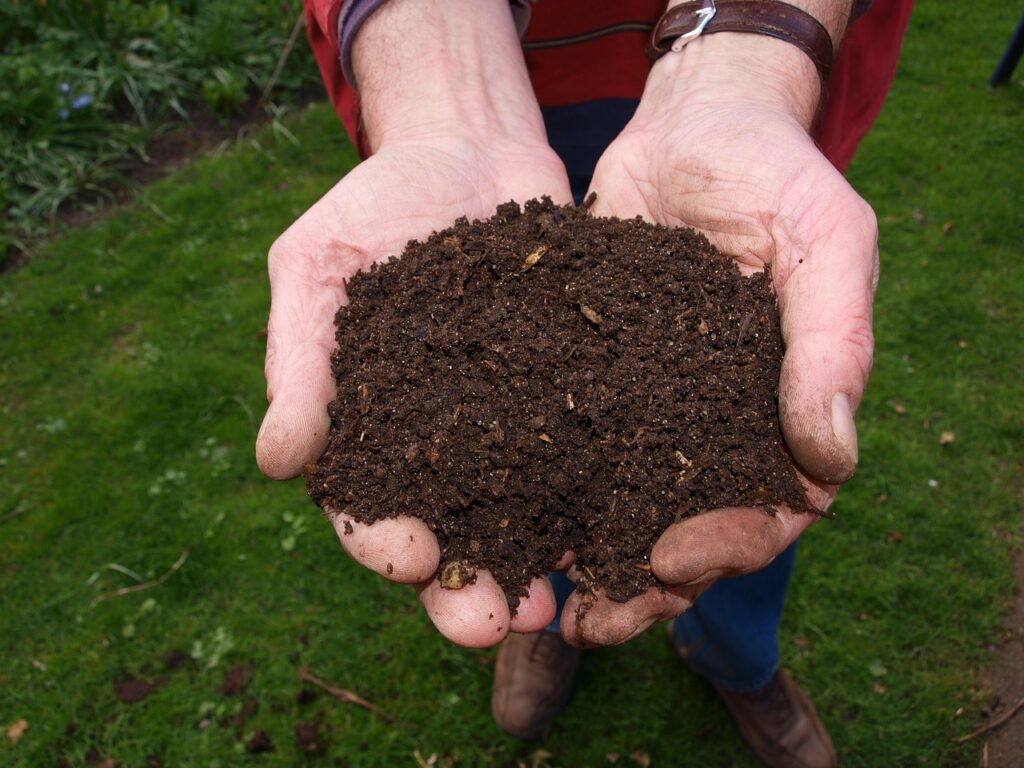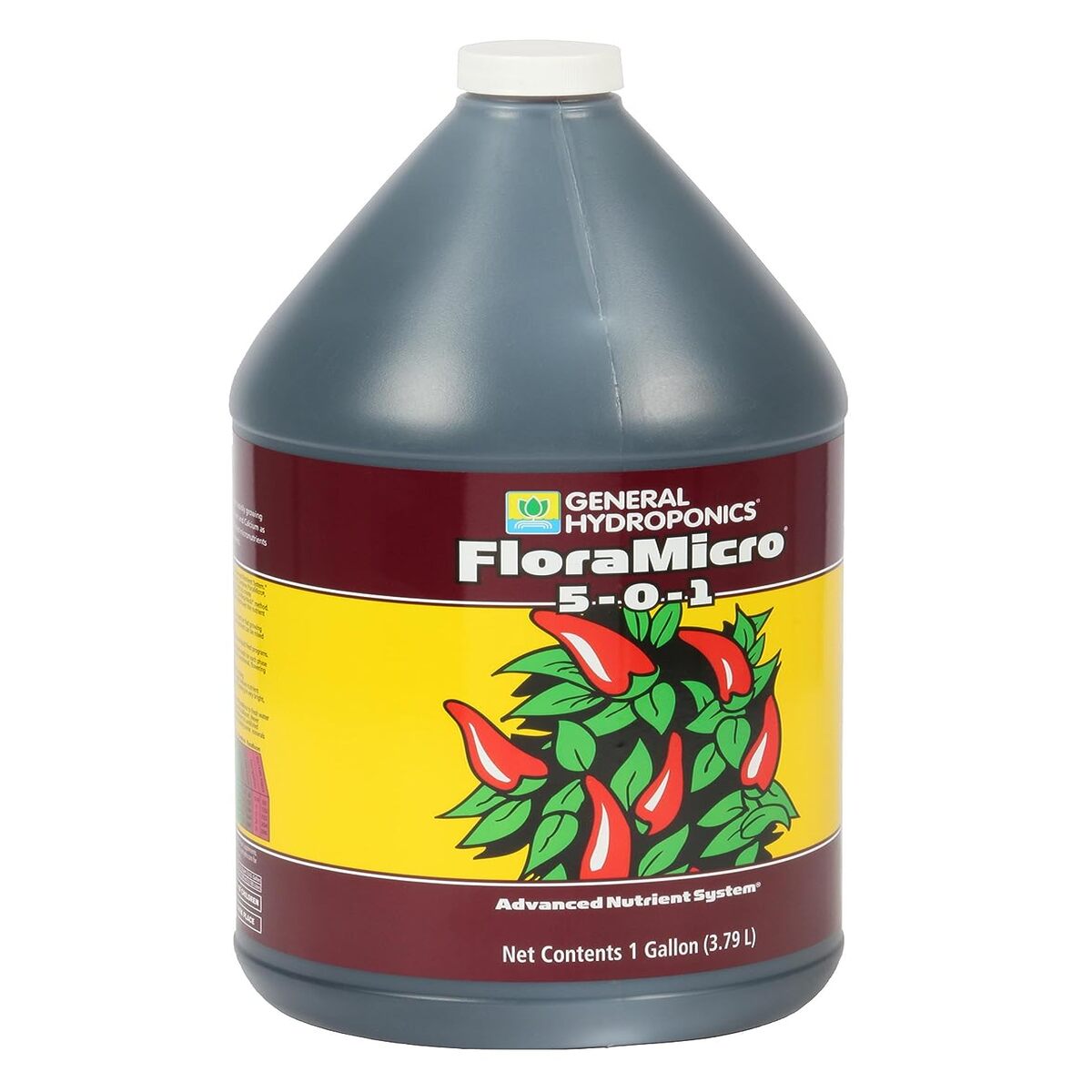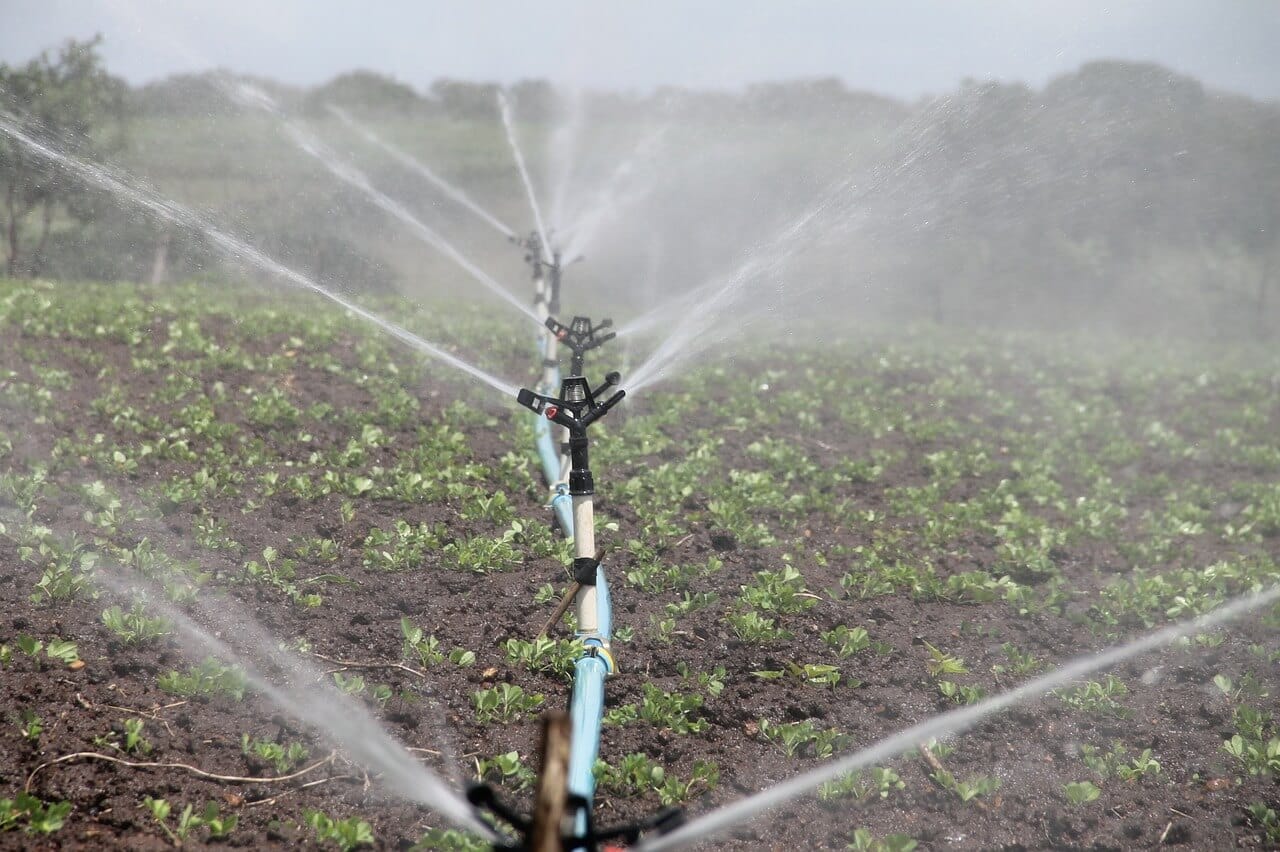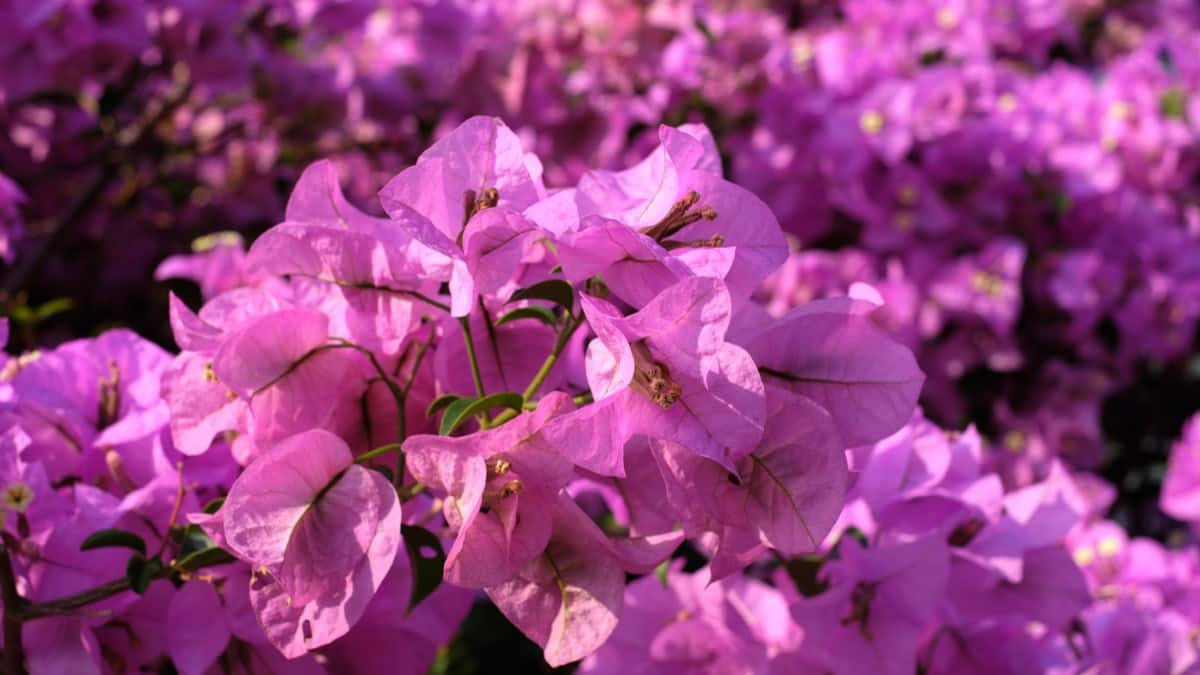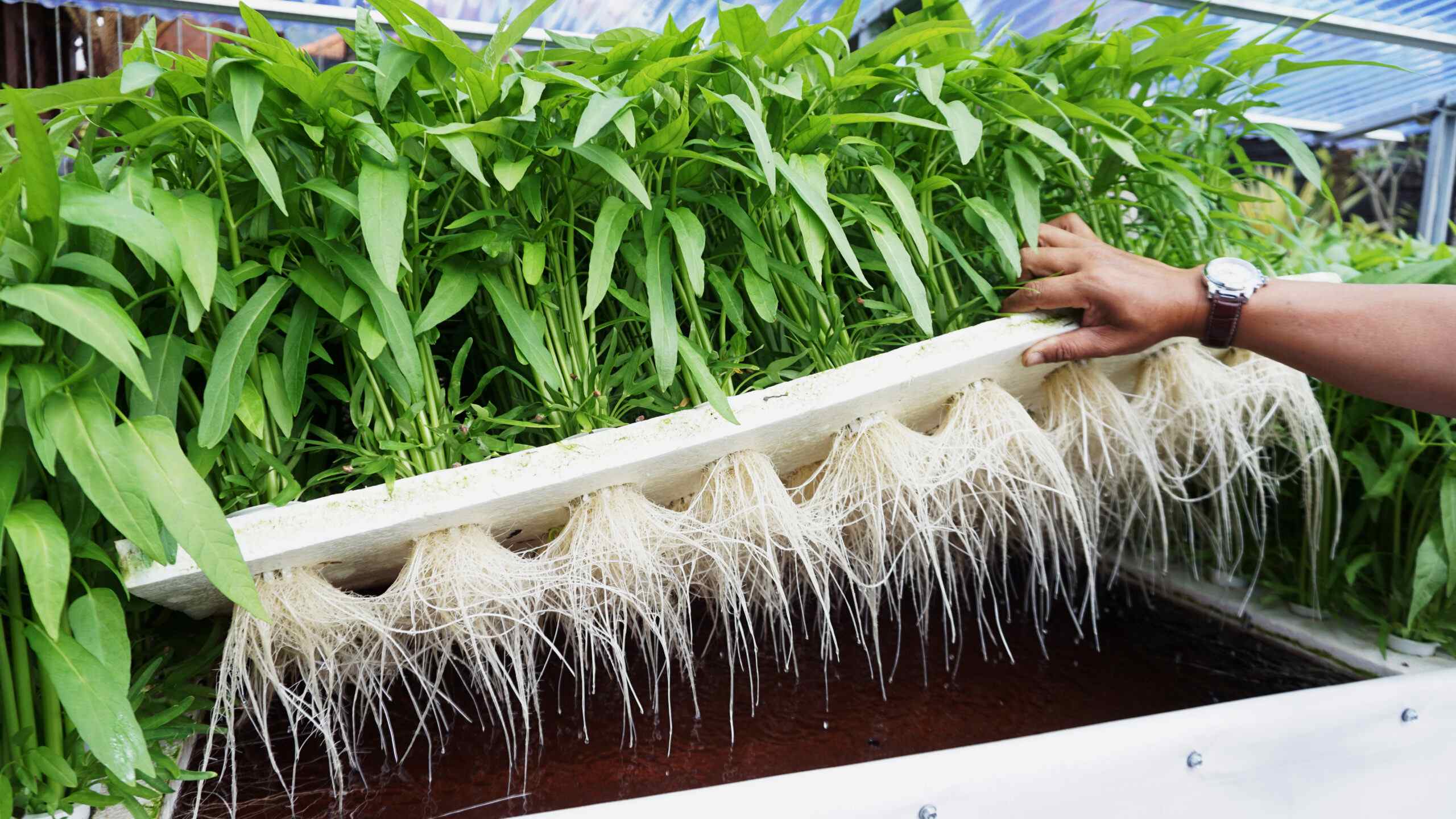Home>Types of Gardening>Edible Gardening>What Type Of Fertilizer To Use During Spring


Edible Gardening
What Type Of Fertilizer To Use During Spring
Modified: February 9, 2024
Find out the best type of fertilizer for your spring edible gardening. Discover expert tips and advice for nourishing your plants for a bountiful harvest.
(Many of the links in this article redirect to a specific reviewed product. Your purchase of these products through affiliate links helps to generate commission for Chicagolandgardening.com, at no extra cost. Learn more)
Table of Contents
- Introduction
- Understanding Spring Fertilizer Needs
- Factors to Consider Before Choosing Fertilizer
- Traditional Fertilizer Options for Spring
- Organic Fertilizer Options for Spring
- Specialized Fertilizers for Specific Spring Plants
- Tips for Applying Fertilizer in the Spring
- Common Mistakes to Avoid When Using Spring Fertilizer
- Conclusion
Introduction
Spring is the season when nature wakes up from its winter slumber, and this is also the perfect time to get started with your edible gardening. Whether you have a small backyard plot or a few containers on your balcony, growing your own food can be a rewarding experience. To ensure successful growth and abundant harvests, one crucial aspect to consider is fertilization. Choosing the right type of fertilizer for spring is essential for providing your plants with the necessary nutrients they need to flourish.
When it comes to edible gardening, the quality of the soil plays a vital role in the overall health and productivity of your plants. While organic matter, proper watering, and sunlight are fundamental, fertilizers help replenish essential nutrients that may become depleted over time. Spring fertilizer serves as a fuel source for your plants, giving them the boost they need to grow, develop strong roots, and produce bountiful yields.
Before diving into the specifics of selecting the right fertilizer for your spring garden, it’s important to understand your plants’ needs and the factors that influence your decision. Factors such as the type of plants you are growing, soil condition, and the desired outcome will play a crucial role in determining the most suitable fertilizer for your garden. In this article, we will explore traditional and organic fertilizer options, specialized fertilizers for specific plants, and tips for proper application to help you make an informed choice for your edible garden.
Understanding Spring Fertilizer Needs
As the days grow longer and warmer, plants shift into their active growth phase in spring. This is a critical time when they have increased nutrient requirements to support their rapid growth and development. Understanding the fertilizer needs of your plants during this season is essential for their overall health and productivity.
When selecting a spring fertilizer, it’s crucial to consider the three primary macronutrients that plants need in large quantities: nitrogen (N), phosphorus (P), and potassium (K). These nutrients play different roles in plant growth and development:
- Nitrogen (N): Promotes lush, green foliage growth and enhances the production of proteins and chlorophyll.
- Phosphorus (P): Stimulates root development, flowering, and fruiting by aiding in energy transfer within the plant.
- Potassium (K): Helps with overall plant health, disease resistance, and nutrient uptake.
Spring fertilizers generally have a higher nitrogen content to meet the increased demands of growing plants. This is because nitrogen fuels vegetative growth, which is especially important during the initial stages of plant development in spring.
In addition to the macronutrients, plants also require micronutrients, albeit in smaller quantities. These include elements like iron, manganese, zinc, copper, and others. While most soils naturally contain these micronutrients, some plants may benefit from supplemental micronutrient fertilization, especially if deficiencies are observed.
Another essential factor to consider is the soil pH. Different plants have different pH preferences, and maintaining the correct soil pH is crucial for proper nutrient uptake. Most vegetables prefer slightly acidic to neutral soil, with a pH range between 6.0 and 7.0. Before applying fertilizer, it’s a good practice to test your soil’s pH level and adjust it if necessary.
Having a thorough understanding of your plants’ nutrient requirements and the specific needs of your garden soil will help you choose the most appropriate fertilizer for spring. In the following sections, we will explore the traditional and organic fertilizer options available for your edible garden.
Factors to Consider Before Choosing Fertilizer
Before selecting a fertilizer for your spring garden, it’s essential to consider several important factors that will help determine the most suitable option. Understanding these factors will ensure that you provide your plants with the right nutrients in the right quantities, leading to healthy growth and abundant yields.
Plant Type: Different plants have different nutritional needs. Some are heavy feeders, requiring more nutrients, while others may have specific nutrient deficiencies. Understanding the specific requirements of the plants you are growing will guide you in choosing a fertilizer with the appropriate nutrient composition.
Soil Analysis: Testing your soil is crucial to assess its existing nutrient levels and pH. A soil test can help determine whether your soil is lacking any essential nutrients or if the pH needs to be adjusted. This information will guide you in choosing a fertilizer that addresses the specific deficiencies and maintains the optimal pH range for your plants.
Fertilizer Formulation: Fertilizers come in various formulations, including granular, liquid, and slow-release. Each formulation has its benefits and application methods. Granular fertilizers are easy to handle, long-lasting, and ideal for incorporating into the soil before planting. Liquid fertilizers are quickly absorbed by plants and are suitable for both soil application and foliar feeding. Slow-release fertilizers release nutrients gradually over time, providing a steady supply of nutrients to plants.
Nutrient Ratio: Fertilizers are labeled with a three-number ratio that represents the percentage of nitrogen (N), phosphorus (P), and potassium (K) they contain. This ratio helps you determine the relative amounts of these macronutrients in the fertilizer. Different plants have different nutrient needs, so choosing a fertilizer with the appropriate ratio will ensure balanced nutrition for optimal growth.
Organic vs. Synthetic: Consider whether you prefer organic or synthetic fertilizers. Organic fertilizers are derived from natural sources and release nutrients slowly over time. They improve soil health, microbial activity, and long-term fertility. Synthetic fertilizers, on the other hand, are chemically formulated and provide a quick burst of nutrients. They are often more concentrated and readily available to plants.
Environmental Impact: It’s important to choose a fertilizer that is environmentally friendly and minimizes the risk of nutrient runoff into water sources. Look for fertilizers with controlled-release formulas or slow-release properties, as they reduce the risk of overfertilization and pollution.
Cost and Availability: Consider your budget and the availability of the fertilizer options in your area. Compare prices, read reviews, and consider the long-term benefits and effectiveness of the fertilizers.
Considering these factors before choosing a fertilizer for your spring gardening endeavors will help ensure the success and health of your plants. In the following sections, we will explore traditional and organic fertilizer options that cater to a range of plant needs.
Traditional Fertilizer Options for Spring
When it comes to traditional fertilizer options for spring, synthetic fertilizers are popular among gardeners for their immediate nutrient availability and convenience. These fertilizers are chemically formulated to provide plants with the essential macronutrients they need for vigorous growth. Here are some common traditional fertilizer options:
- Complete fertilizers: These fertilizers contain a balanced ratio of nitrogen (N), phosphorus (P), and potassium (K), such as a 10-10-10 or 20-20-20 formulation. They are versatile and suitable for a wide range of plants, providing balanced nutrition for overall growth and development.
- Nitrogen fertilizer: If your plants require an extra boost of foliage growth, nitrogen fertilizers can be beneficial. Look for formulations with a higher nitrogen content like 21-0-0 or 46-0-0, which are ideal for leafy vegetables and grasses.
- Phosphorus fertilizer: If you want to promote root development, flowering, and fruiting in your plants, consider using phosphorus-rich fertilizers. Look for formulations with a higher phosphorus content like 0-46-0 or 10-52-10, which are suitable for fruit-bearing plants and flowering perennials.
- Potassium fertilizer: Potassium-rich fertilizers are essential for promoting overall plant health, disease resistance, and stress tolerance. Look for formulations with a higher potassium content like 0-0-60 or 0-0-50, which are beneficial for fruits, vegetables, and flowering plants.
- Slow-release fertilizers: These fertilizers provide a gradual release of nutrients over an extended period, ensuring a steady supply of nutrition to your plants. Slow-release fertilizers come in various formulations, including coated granules or controlled-release spikes. They are convenient to use and reduce the risk of overfertilization.
Before applying traditional fertilizers, carefully read and follow the instructions on the packaging. It’s important to avoid overfertilization, as it can lead to nutrient imbalances, burning of plants, and environmental pollution. Apply the fertilizer evenly and at the recommended rates for the specific plants you are growing.
While traditional fertilizers can provide quick and targeted nutrition to plants, it’s important to consider the long-term effects on soil health and the environment. If you prefer a more sustainable and organic approach to gardening, exploring organic fertilizer options may be a better choice. Let’s explore some of the organic fertilizer options for spring gardening in the next section.
Organic Fertilizer Options for Spring
For gardeners seeking a more eco-friendly and sustainable approach to fertilization, organic fertilizers are an excellent choice. These fertilizers are derived from natural sources, such as plant and animal matter, and provide slow-release nutrients that nourish plants over time. Here are some popular organic fertilizer options for spring:
- Compost: Compost is a nutrient-rich organic matter that improves soil structure, enhances moisture retention, and provides a wide range of essential nutrients. Incorporating compost into your soil before planting or using it as a top dressing throughout the growing season is an excellent way to feed your plants naturally.
- Manure: Well-aged animal manure, such as cow, horse, or chicken manure, is an excellent source of organic nutrients. It enriches the soil with nitrogen, phosphorus, and potassium, while also improving its water-holding capacity. Ensure that the manure is well-composted or aged to avoid potential issues with pathogens or excessive nitrogen levels.
- Bone meal: Bone meal is a natural fertilizer high in phosphorus, making it beneficial for promoting root development and flower production. It is derived from ground animal bones and is commonly used in spring for flowering plants, fruiting vegetables, and bulbs.
- Blood meal: Blood meal is another organic fertilizer rich in nitrogen. It is made from dried animal blood and provides an immediate nitrogen boost to plants. Blood meal is suitable for vegetables, leafy greens, and plants that need a quick growth spurt.
- Fish emulsion: Fish emulsion is a liquid organic fertilizer made from fish waste, and it is high in nitrogen, phosphorus, and trace minerals. It is a quick-release fertilizer that stimulates growth and can be used for a wide range of plants, including vegetables, herbs, and flowers.
- Seaweed and kelp: Seaweed and kelp-based fertilizers are rich in trace minerals, growth hormones, and natural plant stimulants. They promote healthy root growth, improve nutrient uptake, and enhance overall plant resilience. They can be used as foliar sprays or incorporated into the soil.
When using organic fertilizers, it’s important to follow the package instructions for proper application rates. Organic fertilizers generally have a lower nutrient content compared to synthetic fertilizers, so it may be necessary to apply them more frequently or in larger quantities. Additionally, organic fertilizers improve soil structure, microbial activity, and long-term fertility, contributing to overall soil health and sustainability.
Remember that organic fertilizers take time to break down and release nutrients, so it’s important to apply them a few weeks before planting or early in the spring season to allow for proper nutrient absorption by your plants. By incorporating organic fertilizers into your spring gardening routine, you can ensure the health of your plants while minimizing environmental impact.
Specialized Fertilizers for Specific Spring Plants
In addition to traditional and organic fertilizer options, there are specialized fertilizers available that cater to the specific nutrient needs of certain plants. These fertilizers are formulated to provide the ideal balance of nutrients required for optimal growth and production. Here are some examples of specialized fertilizers for specific spring plants:
- Tomato fertilizers: Tomatoes are heavy feeders and benefit from a fertilizer specially formulated for their needs. Tomato fertilizers are high in phosphorus and potassium to promote fruit development and disease resistance. Look for fertilizers labeled specifically for tomatoes, peppers, and other nightshade plants.
- Citrus tree fertilizers: Citrus trees have unique nutrient requirements, including higher levels of nitrogen and micronutrients such as iron, zinc, and manganese. Citrus tree fertilizers are formulated to meet these specific needs and promote healthy growth, flowering, and fruit production.
- Rose fertilizers: Roses are heavy feeders and require a balanced fertilizer with higher levels of phosphorus and potassium to encourage robust blooms. Rose fertilizers also often contain additional micronutrients to enhance flower color and disease resistance.
- Vegetable garden fertilizers: Vegetable garden fertilizers are formulated to provide the optimal balance of nutrients required by a wide range of vegetables. These fertilizers typically have higher levels of nitrogen for vegetative growth and moderate levels of phosphorus and potassium for root development and fruiting.
- Herb fertilizers: Herbs generally require moderate levels of nutrients, and specific herb fertilizers are available to provide the appropriate balance. These fertilizers are often lower in nitrogen to prevent excessive leaf growth while still promoting strong root development and aromatic flavor.
- Flower fertilizers: Flower fertilizers are designed to promote abundant blooms and vibrant colors. They are often higher in phosphorus to support flower production and contain micronutrients to enhance flower longevity and overall plant health.
When using specialized fertilizers, it’s essential to follow the instructions on the packaging for the specific plant. Apply the fertilizer at the recommended rates and intervals to ensure the best results. Additionally, it’s important to note that while these specialized fertilizers are tailored for specific plants, they can still be used for other related plants with similar nutrient requirements.
Before applying any specialized fertilizer, it’s beneficial to supplement it with a general, well-balanced fertilizer to ensure a comprehensive nutrient profile for your plants. This will help address any additional nutritional needs that may not be covered by the specialized fertilizer.
By using specialized fertilizers, you can provide targeted nutrition to your plants, ensuring optimal growth, productivity, and overall plant health.
Tips for Applying Fertilizer in the Spring
Proper application of fertilizer is crucial for maximizing its effectiveness and ensuring the health and vitality of your plants. Here are some helpful tips for applying fertilizer in the spring:
- Read the instructions: Carefully read and follow the instructions on the fertilizer packaging. The instructions will provide guidance on application rates, timing, and other important details specific to the fertilizer you are using.
- Apply before planting: Ideally, incorporate fertilizers into the soil a few weeks before planting your seeds or transplanting seedlings. This allows the nutrients to be readily available to the plants when they start growing.
- Top-dressing application: For well-established plants, you can apply fertilizer as a top dressing around the base of the plants. Be sure to spread the fertilizer evenly and avoid direct contact with the plant stems to prevent burning.
- Water after application: After applying the fertilizer, water your plants thoroughly. This helps to dissolve and distribute the nutrients in the soil and promotes nutrient absorption by the plant roots.
- Choose the right time of day: It’s best to apply fertilizer in the early morning or late afternoon when temperatures are cooler. Avoid applying fertilizer during peak heat hours to prevent potential damage to the plants.
- Avoid over-fertilization: More is not necessarily better when it comes to fertilizing. Over-fertilization can lead to nutrient imbalances, burning of plant roots, and environmental pollution. Follow the recommended application rates and avoid excessive use of fertilizers.
- Consider slow-release options: Slow-release fertilizers provide a steady release of nutrients over time, reducing the risk of nutrient runoff and ensuring a continuous supply of nutrition to the plants. Consider using slow-release fertilizers to minimize the need for frequent applications.
- Fertilize according to plant needs: Different plants have different nutrient requirements. Consider the specific needs of the plants you are growing and choose a fertilizer formulation that matches those needs. This will help provide the appropriate nutrients for optimal growth and productivity.
- Monitor plant response: Pay attention to how your plants respond to the fertilizer. Look for signs of healthy growth, such as increased foliage, improved flowering, and vibrant color. If you notice any negative effects or signs of nutrient deficiency or excess, adjust your fertilizer application accordingly.
- Maintain a routine: Fertilization is an ongoing process, so it’s important to establish a regular fertilization routine throughout the growing season. Follow the recommended schedules for fertilizing specific plants and adjust based on the needs of your individual garden.
By following these tips, you can ensure proper and effective fertilizer application in your spring garden. Remember, each plant is unique, so it’s important to observe and respond to the specific needs of your plants to achieve optimal results.
Common Mistakes to Avoid When Using Spring Fertilizer
When it comes to fertilizing your plants in the spring, it’s important to avoid common mistakes that can potentially harm your plants or lead to ineffective fertilizer application. By being aware of these mistakes, you can ensure that your plants receive the necessary nutrients for healthy growth. Here are some common mistakes to avoid when using spring fertilizer:
- Over-fertilization: Applying too much fertilizer can cause nutrient imbalances, root burn, and even plant death. Always follow the recommended application rates and avoid the temptation to add more fertilizer, thinking it will enhance growth.
- Under-fertilization: On the other hand, neglecting to fertilize or using insufficient amounts can result in nutrient deficiencies and stunted growth. Be sure to provide your plants with the necessary nutrients they need to thrive.
- Applying fertilizer to dry soil: Fertilizing dry soil reduces the effectiveness of the fertilizer as the nutrients cannot penetrate the soil and reach the plant roots. Water the soil thoroughly before applying fertilizer to ensure proper nutrient absorption.
- Poor timing of application: Applying fertilizer too early or too late in the spring can lead to ineffective nutrient uptake by the plants. It’s important to time your fertilizer applications according to the specific needs of your plants and their growth stages.
- Not considering soil pH: Different plants thrive in different soil pH levels. Failing to consider the pH of your soil when choosing a fertilizer can result in poor nutrient availability and nutrient deficiencies. Test your soil and choose a fertilizer that aligns with your plant’s pH preferences.
- Application near plant stems: Directly applying fertilizer near the base of plant stems can burn the plant tissues and cause damage. Always spread the fertilizer evenly around the drip-line of the plants, keeping it a safe distance away from stems and foliage.
- Ignoring soil testing: Soil testing is essential for understanding the nutrient composition and pH of your soil. By neglecting to conduct soil tests, you may be applying unnecessary or incorrect nutrients, leading to potential imbalances or inadequate nourishment for your plants.
- Using fertilizer past its expiration date: Fertilizers can lose their effectiveness over time, especially if they are not stored properly. Using expired fertilizers may result in inadequate nutrient availability or in some cases, even harm your plants. Always check the expiration date and discard any old or expired fertilizers.
- Applying fertilizer without adequate watering: After applying fertilizer, it’s important to water your plants thoroughly to help dissolve and distribute the nutrients to the root zone. Without proper watering, the nutrients may not be readily available to the plants, resulting in ineffective fertilization.
- Not adjusting fertilization practices: Each plant has unique nutrient requirements and growth patterns. It’s important to monitor your plants’ responses to the fertilizer and make necessary adjustments based on their needs. Pay attention to signs of over-fertilization or nutrient deficiencies and adjust your fertilization practices accordingly.
By avoiding these common mistakes, you can optimize the effectiveness of your spring fertilizer application and ensure healthier, more productive plants in your garden.
Conclusion
Spring is an exciting time for edible gardening, and selecting the right fertilizer is crucial for the success and productivity of your plants. Understanding the specific nutrient needs of your plants, considering factors such as soil analysis and fertilizer formulation, and choosing between traditional and organic options are important steps in making an informed choice. Additionally, specialized fertilizers tailored to specific plants can provide targeted nutrition for optimal growth and production.
When applying fertilizer in the spring, it’s essential to follow proper techniques, such as reading instructions, timing application correctly, and avoiding common mistakes like over-fertilization or poor soil pH consideration. By adhering to these guidelines, you can ensure that your plants receive the necessary nutrients in the right amounts.
Remember, edible gardening is a journey of continuous learning and adjustment. Therefore, it’s crucial to monitor your plants’ response, adjust fertilization practices when needed, and maintain a regular fertilization routine throughout the growing season. With proper fertilization, your plants will thrive, producing healthy foliage, vibrant flowers, and bountiful harvests.
So, whether you choose traditional or organic fertilizers, or opt for specialized formulations, providing the right nutrients to your plants in the spring will set the stage for a successful and rewarding gardening experience.


